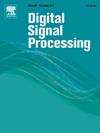室内视觉定位多层次复合注意引导网络
IF 2.9
3区 工程技术
Q2 ENGINEERING, ELECTRICAL & ELECTRONIC
引用次数: 0
摘要
准确、鲁棒的相机姿态估计是无人系统自主导航和路径规划的关键。为了提高复杂室内场景的定位精度,减少特征提取过程中的信息丢失,提出了一种多级复合注意引导场景坐标回归方法。该模型预测了单幅RGB图像中二维像素点与三维场景坐标之间的映射关系。首先,我们引入了多层次特征融合模块(MFF),该模块采用全局池化和并行分支来整合多层次特征,增强了重复结构和低纹理区域的识别能力。接下来,我们设计了一个嵌入式注意模块(EAM),通过并行通道和空间注意机制动态融合多层次特征,保留边缘细节并抑制噪声。最后,采用可微随机样本一致性算法实现姿态参数的鲁棒拟合。对常见的室内公共数据集的评估和分析表明,该方法显著提高了定位性能。此外,广泛的消融评估证实了所提出的嵌入式注意力模块和多层次特征融合模块在提高定位精度方面的有效性。本文章由计算机程序翻译,如有差异,请以英文原文为准。
A multi-level composite attention-guided network for indoor visual localization
Accurate and robust camera pose estimation is essential for autonomous navigation and path planning in unmanned systems. To improve the localization accuracy in complex indoor scenes and mitigate information loss during feature extraction, we propose a multi-level composite attention-guided scene coordinate regression method. The proposed model predicts the mapping between 2D pixel points and 3D scene coordinates from a single RGB image. First, we introduce a Multi-level Feature Fusion Module (MFF), which employs global pooling and parallel branches to consolidate multi-level features, enhancing discrimination in repetitive structures and low-texture regions. Next, we design an Embedded Attention Module (EAM) to dynamically fuse multi-level features through parallel channel and spatial attention mechanisms, preserving edge details and suppressing noise. Finally, a differentiable random sample consensus algorithm is used to achieve robust fitting of pose parameters. Evaluation and analysis on common indoor public datasets demonstrate that the proposed method significantly improves localization performance. Additionally, extensive ablation evaluations confirm the effectiveness of the proposed Embedded Attention Module and Multi-level Feature Fusion Module in enhancing localization accuracy.
求助全文
通过发布文献求助,成功后即可免费获取论文全文。
去求助
来源期刊

Digital Signal Processing
工程技术-工程:电子与电气
CiteScore
5.30
自引率
17.20%
发文量
435
审稿时长
66 days
期刊介绍:
Digital Signal Processing: A Review Journal is one of the oldest and most established journals in the field of signal processing yet it aims to be the most innovative. The Journal invites top quality research articles at the frontiers of research in all aspects of signal processing. Our objective is to provide a platform for the publication of ground-breaking research in signal processing with both academic and industrial appeal.
The journal has a special emphasis on statistical signal processing methodology such as Bayesian signal processing, and encourages articles on emerging applications of signal processing such as:
• big data• machine learning• internet of things• information security• systems biology and computational biology,• financial time series analysis,• autonomous vehicles,• quantum computing,• neuromorphic engineering,• human-computer interaction and intelligent user interfaces,• environmental signal processing,• geophysical signal processing including seismic signal processing,• chemioinformatics and bioinformatics,• audio, visual and performance arts,• disaster management and prevention,• renewable energy,
 求助内容:
求助内容: 应助结果提醒方式:
应助结果提醒方式:


